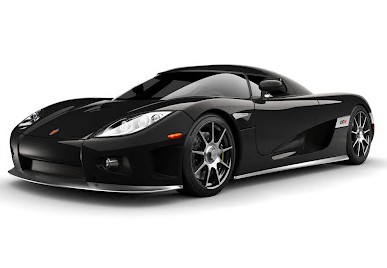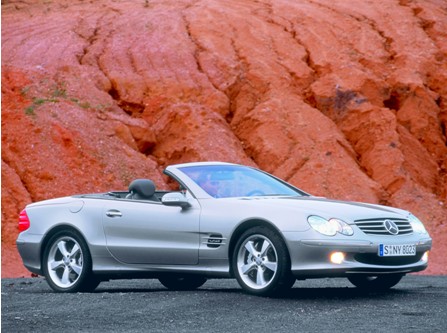
Racing car
USinfo | 2012-12-26 15:19

Auto racing (also known as automobile racing or car racing) is a motorsport involving the racing of cars for competition.
1950–present
After the Second World War, sports car racing emerged as a distinct form of racing with its own classic races, and, from 1953, its own FIA sanctioned World Championship. NASCAR's Strictly Stock Division was renamed the "Grand National" division beginning in the 1950 season. Over a period of more than a decade, modifications for both safety and performance were allowed, and by the mid-1960s, the vehicles were purpose-built race cars with a stock-appearing body. The first NASCAR competition held outside of the U.S. was in Canada, where on July 1, 1952, Buddy Shuman won a 200-lap race on a half-mile (800 m) dirt track in Stamford Park, Ontario, near Niagara Falls.
From 1962 sports cars temporarily took a back seat to GT cars with the FIA replacing the World Championship for Sports Cars with the International Championship for GT Manufacturers.[11] Through the 1960s, as superspeedways were built and old dirt tracks were paved, the number of dirt races was reduced.
A breed of powerful hybrids appeared in the 50s and 60s and raced on both sides of the Atlantic, featuring European chassis and large American engines – from the early Allard cars via hybrids such as Lotus 19s fitted with large engines through to the AC Cobra. The combination of mostly British chassis and American V8 engines gave rise to the Can-Am series in the 1960s and 1970s. Clubmans provided much entertainment at club-racing level from the 1960s into the 1990s and John Webb revived interest in big sports prototypes with Thundersports in the 1980s. Group 4 Grand Touring Cars and Group 5 Special Production Cars became the premier form of Sports car racing from 1976, with prototypes going into a general decline apart from Porsche 936 domination at Le Mans and a lower-key series of races for smaller two-litreGroup 6 prototypes. The last NASCAR race on a dirt track was held on September 30, 1970 at the half-mile State Fairgrounds Speedway in Raleigh, North Carolina. From 1972 through 2003, NASCAR's premier series was called the Winston Cup Series, sponsored by R. J. Reynolds Tobacco Company cigarette brand Winston. The changes that resulted from RJR's involvement, as well as the reduction of the schedule from 48 to 31 races a year, established 1972 as the beginning of NASCAR's "modern era".

In Europe, the FIA adopted the ACO GTP rules virtually unchanged and sanctioned the Group CWorld Endurance Championship (or World Sportscar Championship), featuring high-tech closed-cockpit prototypes. In the USA, the IMSACamel GTP series boasted close competition between huge fields of manufacturer-backed teams and privateer squads – the cars were technically similar to Group Cs but used a sliding scale of weights and engine capacities to try to limit performance. The FIA attempted to make Group C into a virtual "two seater Grand Prix" format in the early 1990s, with engine rules in common with F1, short race distances, and a schedule dovetailing with that of the F1 rounds. The IMSA GT Championship had been prototype-based since 1983, with less emphasis on production cars. Australian Production Car Championship was first contested in 1987, with the inaugural champion determined from the results of two races held at the Winton Motor Raceway in Victoria on September 27. The first World Touring Car Championship, which was open to Group A Touring Cars, was held in 1987 concurrent to the long-running European Touring Car Championship (ETCC). Additional rounds were held outside Europe at Bathurst in Australia, Calder Park Raceway in Australia (using both the road course and the then newly constructed Thunderdome), Wellington in New Zealand and Mount Fuji in Japan. The Drivers Championship was won by Roberto Ravaglia in a BMW M3 and the Entrants Championship was won by the Eggenberger Texaco Ford No 7 entry, which was a Ford Sierra. Winston Cup Series underwent a large boom in popularity in the 1990s.[13] This coincided with a decline of popularity in American Championship Car Racing. The FISA decided to separate the rally cars into three classes: Group N (production cars), Group A (modified production cars), and Group B (modified sport cars). Group B was introduced by the FIA in 1982 as replacement for both Group 4 (modified grand touring) and Group 5 (touring prototypes) cars.
The IMSA GT Series evolved into the American Le Mans Series; which ran its first season in 1999,[14] the European races eventually became the closely related Le Mans Series, both of which mix prototypes and GTs. The SCCA World Challenge consists of a one hour race for each round, combining three classes: GT (Chevrolet Corvette, Aston Martin DB9, etc.), "GTS" (Acura TSX, BMW 3-series, etc.; replaced the former touring car class), and Touring Car (a "showroom stock" class similar to Grand Am's Continental Challenge). NASCAR was becoming increasingly dominant and the IndyCar Series' split from CART in 1996 put more emphasis on ovals regarding domestic open-wheel racing.

Racing car ranking:
Nissan GT-R
One of the biggest – if not the biggest – keys to victory in the “stoplight grand prix” is getting a good launch. And few street legal cars launch with the kind of ferociousness that the Nissan GT-R does. The new one has 530hp and a please-don’t-call-it-launch-control function to get it out of the hole, but the speed just. Keeps.Coming. Not bad for a nearly two-ton 2+2 coupe .
Ford Shelby GT500
No list of top notch street-racing hardware would be complete without at least one muscle car, and the current leader of Ford’s Mustang herd, the Shelby GT500, is one of the best you can buy new. The all-aluminum supercharged 5.4L V8 cranks out 550hp, and is matched with a take-it-or-leave-it 6-speed manual transmission. However, the most valuable component as far as street racers are concerned might very well be the solid rear axle, which is far less susceptible to wheel hop than most independent rear suspension designs.
Mercedes-Benz 300SEL 6.3
Staying with the muscle car theme, one of the first to come out of Germany was the Mercedes-Benz 300SEL 6.3. By taking the 6.3L M100 V8 from the company’s flagship 600 and dropping it into the W109 S-Class, Mercedes-Benz engineers created one of the all time greatest sleepers (cars that are much faster than they look).But for one “6.3” badge on the trunk, you’d think it was just another long wheelbase S from the late ‘60s or early ‘70s. Only when the light turned green would your rival know you were packing a 300hp punch.
Buick Park Avenue Ultra
Like the mighty Merc seen above, the Buick Park Avenue Ultra was a wolf in high-society sheep’s clothing. Looks-wise it wasn’t that different from the one that carted your grandparents to and from Denny’s, but features a supercharged version of the standard model’s 3.8L V6 that produces 240hp and 280 lb.-ft of torque. No, it isn’t scorchingly fast, but it’s quick enough to sneak up on and humiliate the average cocky Civic driver who thinks his Type-R badges and fartcan exhaust makes him invincible (especially if you can score a Park Avenue Ultra with curb feelers or an external wheelchair rack).

Mitsubishi Lancer Evolution MR
The Mitsubishi Lancer Evolution is born out of the Japanese firm’s success in rallying. And in rallying, acceleration and grip are key to setting fast times, so it’s no surprise the Evo is a force to be reckoned with on the street. The turbocharged 2.0L inline-four provides 291hp, and the MR version features a dual-clutch 6-speed transmission for rapid-fire shifting. It also has Bilstein struts, Eibach springs, and two piece front brake rotors, should the impromptu track on which you’re competing include some curves.
Volvo V70R
You seldom see “Volvo,” “station wagon,” and “high performance in the same sentence…unless you’re talking about the V70R. With a 300hp turbocharged 2.5L inline-5, AWD , an optional 6-speed manual, and a sophisticated multi-mode suspension system, this wagon definitely hauls more than jumbo packs of toilet paper. And unless your adversary knows what to look for, he won’t know the sort of beat-down that’s coming.
Ford Taurus SHO
When we heard Ford was reintroducing the Taurus SHO, we had our doubts about it being able to recapture the magic of the first three iterations. We needn’t have worried, because even though it’s substantially chubbier and pricier than its predecessors, this baby moves. The 3.5L twin-turbo V6 makes 365hp, and there’s AWD to make sure it all gets to the pavement. Best of all, it takes a highly trained eye to distinguish an SHO from a regular Taurus.
Mercedes-Benz SL600
We know what you’re thinking: What’s a car that’s often bought by senior partners in law firms and semi-retired stockbrokers doing on a list of star street racers? The answer is 11.9, because that’s how many seconds it took one to cover the standing quarter-mile when Car and Driver tested one in 2004. The 5.5L twin-turbo V12 produces 493hp and 590 lb.-ft of torque, but this car’s real calling card is being able to catapult from stoplight to stoplight…while still having toys like a retractable hardtop and massaging seats. It’s beautiful in its absurdity.
Chevrolet Camaro ZL1
While the Shelby GT500 is the current king of the modern muscle cars in terms of sheer power, it’s about to be trumped by the Chevrolet Camaro ZL1. While not as subtle as it’s 1969 namesake, the 2012 Camaro ZL1 does pack a supercharged 580hp V8 that’s not that detuned relative to the similar one found in the Corvette ZR1. Maybe it’ll be déjà vu on Woodward Avenue.
Porsche 911 Turbo S
If the Nissan GT-R is Godzilla, than the Porsche 911 Turbo S is Mothra. Like the Nissan, the 911 Turbo S features AWD, a dual-clutch transmission (with 7-speeds rather than 6) and a twin-turbocharged six-cylinder engine (a 3.6L flat-six mounted in the rear instead of a 3.8L V6 sitting up front). Also like the Nissan, Porsche’s baddest AWD 911 reaches 60 mph faster than a great many cars can hit 30 mph, something that comes in handy when you’re trying to beat an opponent to a not-always-marked finish line.
Share this page



















